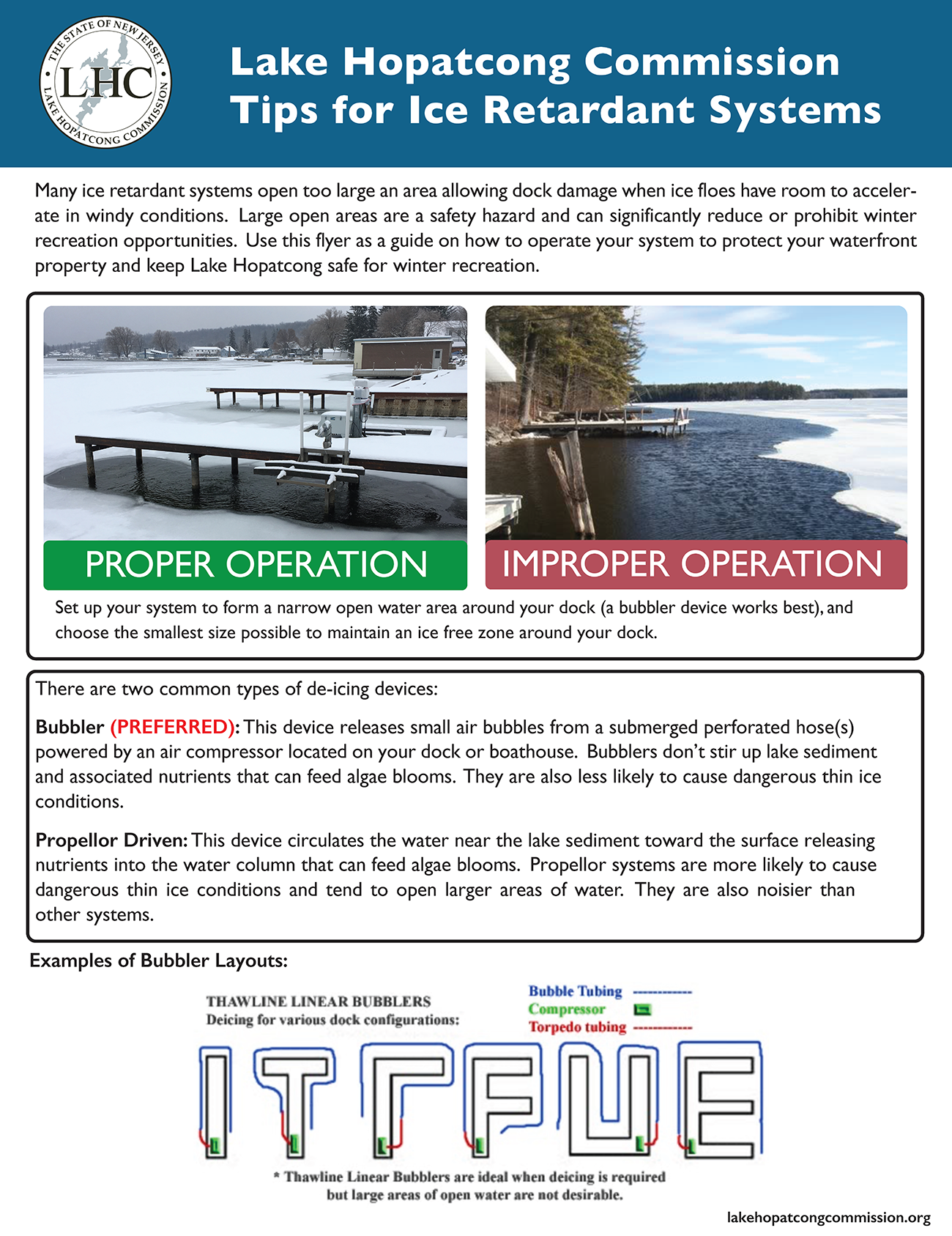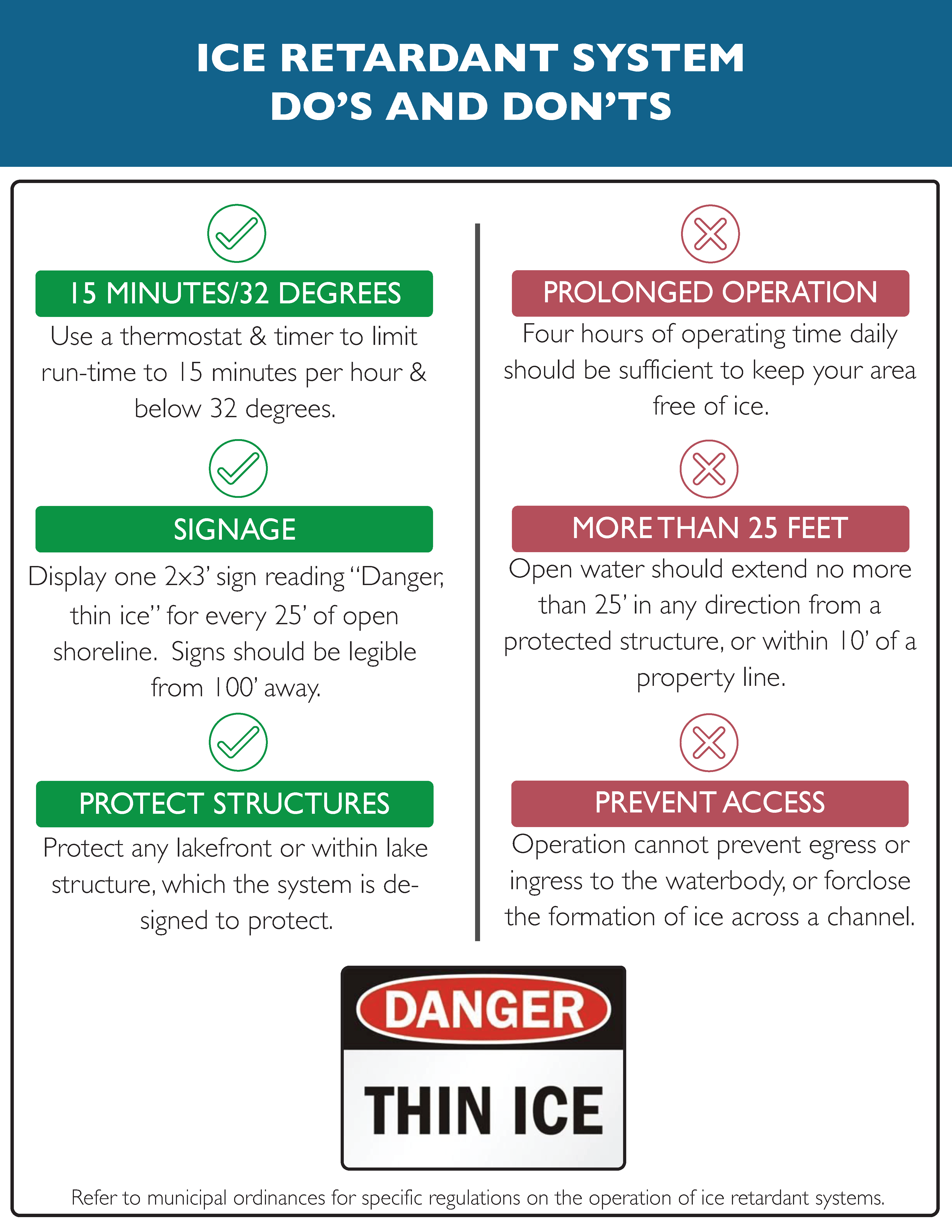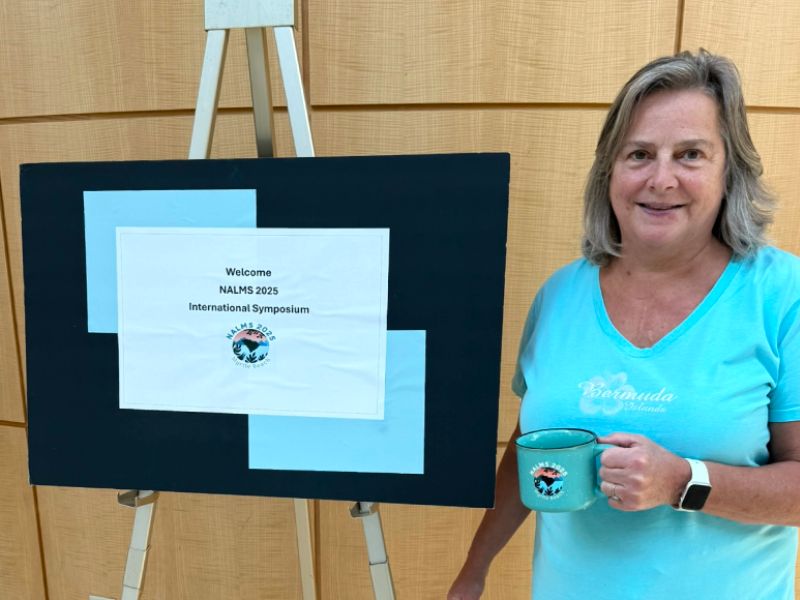
December 02, 2024| Environment, Safety
By: Lake Hopatcong Commission
The following information on the safe usage of ice retardant systems has been provided by the Lake Hopatcong Commission.
The idea of protecting in-lake structures from ice damage is not a new one. First introduced in the 1960s, bubbler systems were meant to maintain a small area of open water along structures to protect against heaving and shifting ice. In recent years the arrival of more powerful propeller-driven systems combined with warmer winter temperatures have increased the amount of open water on Lake Hopatcong. The decision to maintain open water should be preceded with care and consideration for the safety of all lake users and the health of the lake itself.
While the protection of one’s property is important, de-icing devices have associated negative impacts as well, including;
Before purchasing a device, it is important to check with your municipality for municipal requirements, which are meant to limit areas of open water. Regardless of which municipality you reside in, the following regulations are consistent around Lake Hopatcong.
There are two principal types of systems available for purchase today. Bubbler systems use an air compressor to force air through a weighted, perforated line in the water. The resulting air bubbles agitate the water and maintain an open channel along waterfront structures that prevent heaving and shifting ice from causing property damage. The alternative is a propeller-driven system, which has gained popularity in more recent years. These systems use a propeller to draw warmer bottom waters to the surface while simultaneously agitating water to prevent ice formation.
Generally, propeller-driven systems are more powerful than bubbler systems, which means that they often require more frequent observation to ensure compliance with local ordinances. Proper installation of either system requires monitoring and adjustment. ALL ice retardant systems should be operated with a timer to limit run time to 15 minutes per half-hour at night and 15 minutes per hour during the day. A thermostat is equally important and should be used to prevent systems running at temperatures above 32 degrees Fahrenheit.



November 14, 2025
Community, Environment

November 13, 2025
Environment, Events

November 13, 2025
People